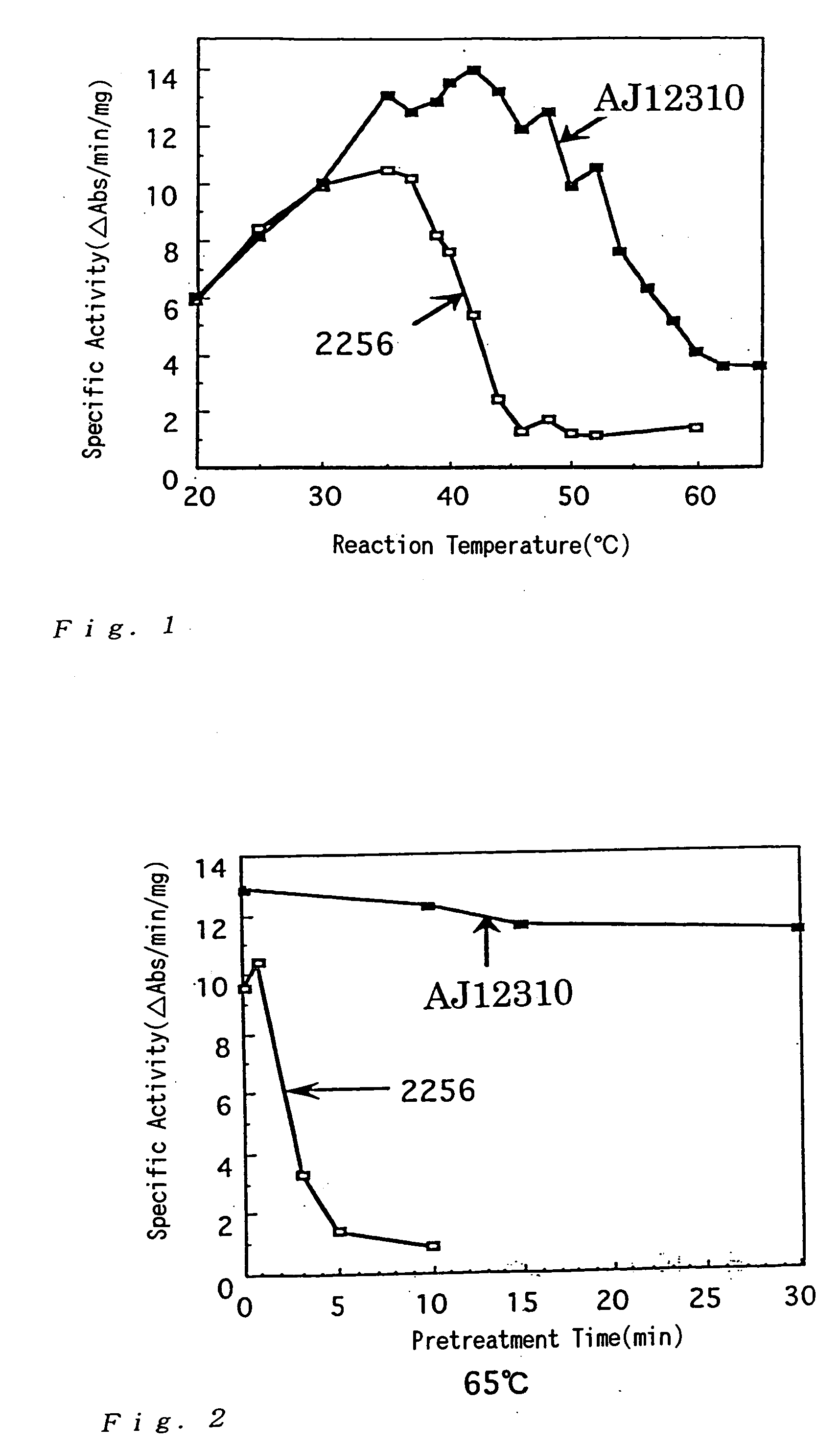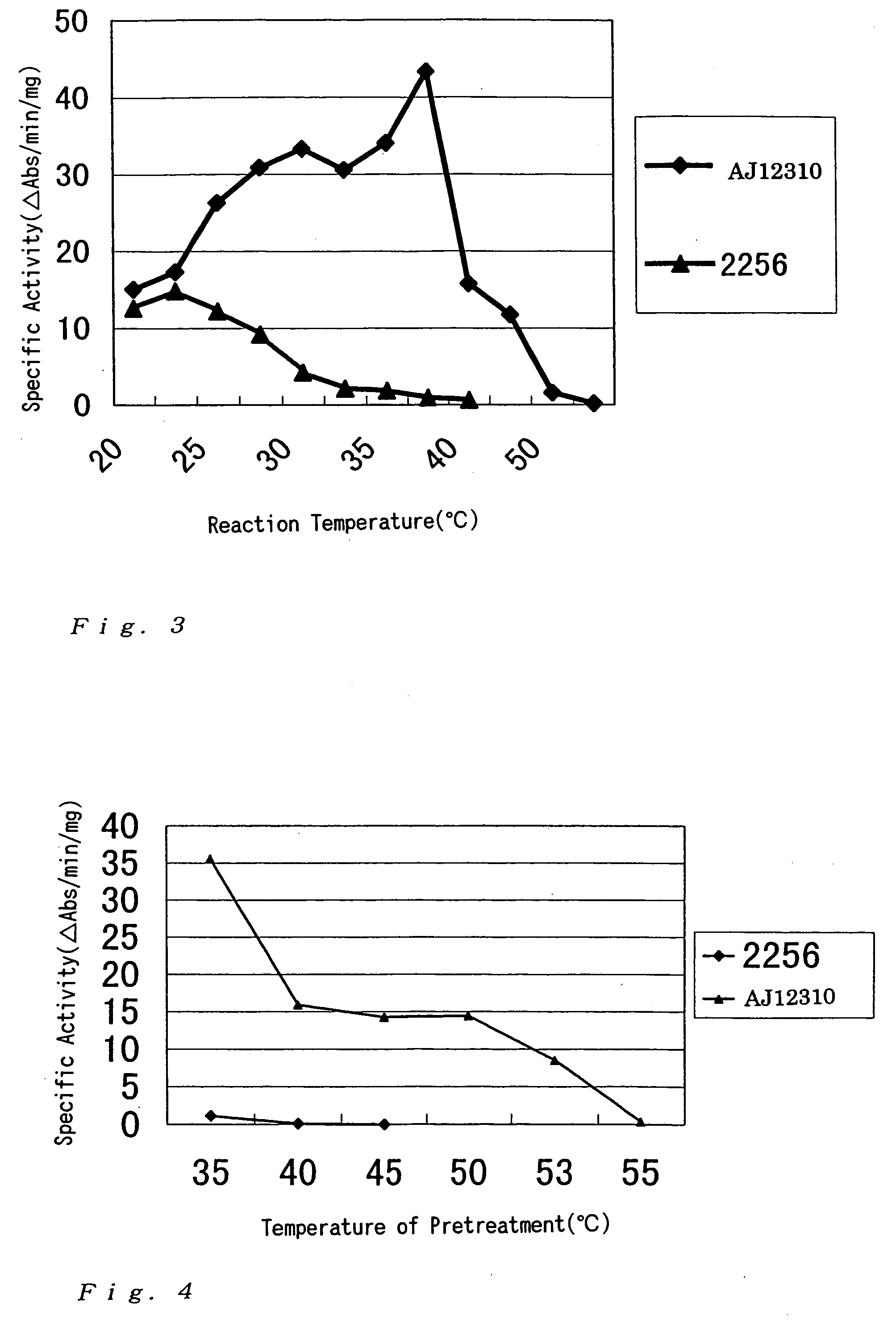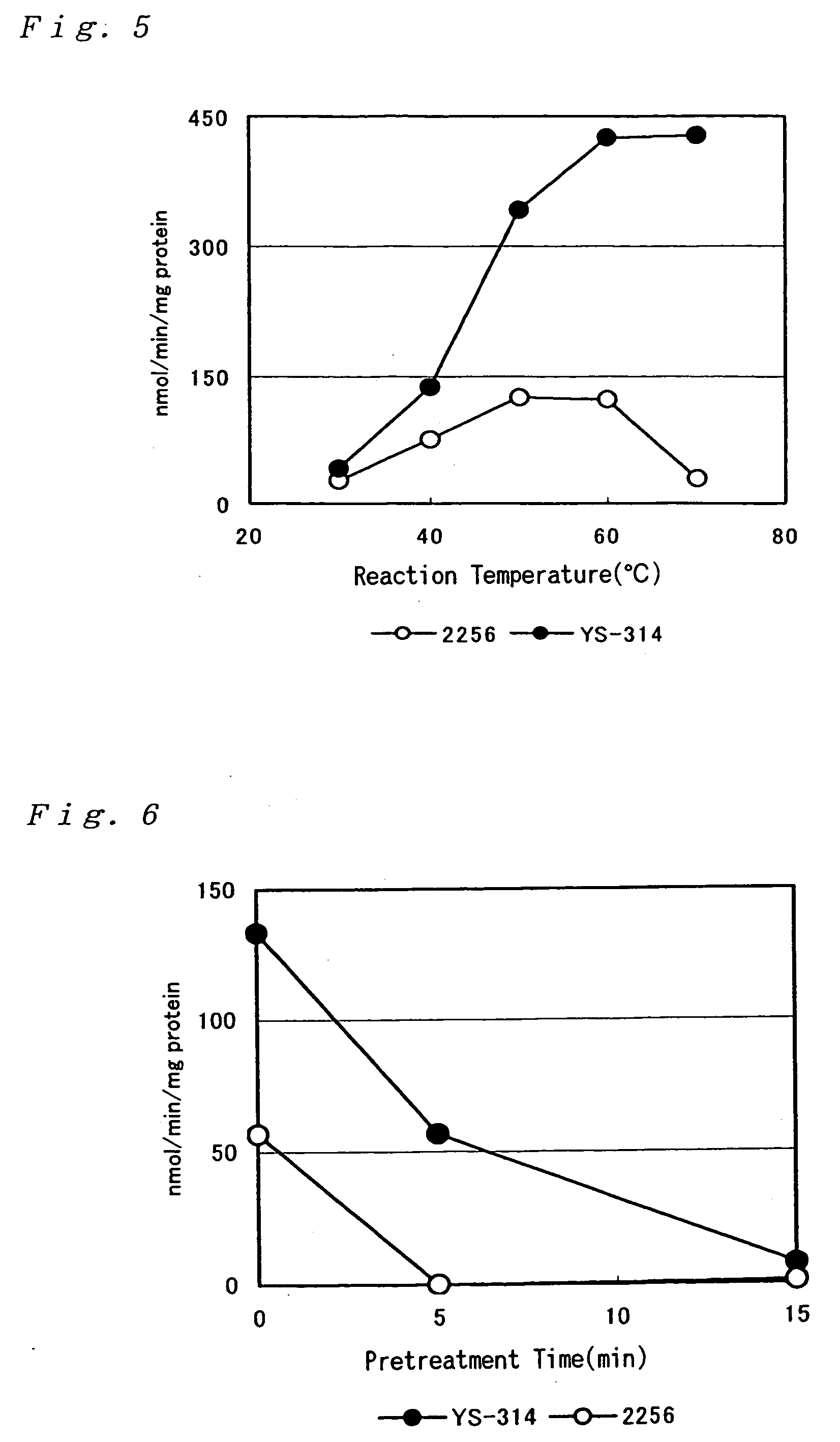Genes for heat resistant enzymes of amino acid biosynthetic pathway derived from thermophilic coryneform bacteria
a biosynthetic pathway and heat resistance technology, applied in the field of heat resistance enzyme genes, can solve the problems of ineffective high temperature culture, inability to realize effective high temperature culture, and inability to reduce so as to achieve enhanced l-glutamic acid productivity and increase the amount of l-glutamic acid accumulated in the medium
- Summary
- Abstract
- Description
- Claims
- Application Information
AI Technical Summary
Benefits of technology
Problems solved by technology
Method used
Image
Examples
example 1
Production of Plasmid Library of Corynebacterium thermoaminogenes
[0175] The Corynebacterium thermoaminogenes AJ12310 strain was cultured in CM2B liquid medium (1 g / dl of yeast extract (produced by Difco), 1 g / dl of polypeptone (produced by Nippon Seiyaku), 0.5 g / dl of NaCl, 10 μg / dl of biotin, pH 7.0 (adjusted with KOH)) at 37° C. for 15 hours, and its chromosomal DNA was prepared from the 10 ml of the medium by using a chromosomal DNA extraction kit (Bacterial Genome DNA Purification Kit (produced by Advanced Genetic Technologies)). The obtained DNA was partially digested with a restriction enzyme Sau3AI, and subjected to 0.8% agarose gel electrophoresis to fractionate the DNA. Then, a band corresponding to a DNA fragment of about 4 to 6 kb was excised from the gel, and a DNA fragment of the objective size was obtained by using a DNA gel extraction kit (GIBCO BRL, Concert™ Rapid Gel Extraction System).
[0176] The plasmid pHSG399 (produced by Takara Shuzo) was fully digested with ...
example 2
Acquisition of gdh and gltA Gene
Investigation of GDH Activity of Corynebacterium thermoaminogenes
[0194] Cells of a wild strain of Corynebacterium thermoaminogenes, the AJ12310 strain, was grown on CM-2B agar medium (1 g / dl of yeast extract (produced by Difco), 1 g / dl of polypeptone (produced by Nippon Seiyaku), 0.5 g / dl of NaCl, 10 μg / dl of biotin, 1.5 g / dl of agar, adjusted to pH 7.0 with KOH). The cells were inoculated to a 500-ml volume flask containing 20 ml of a medium for flask having the following composition and cultured at 37° C. for 17 hours (until the residual sugar reached about 1 g / dl).
[0195] Similarly, cells of the 2256 strain (ATCC13869) of Brevibacterium lactofermentum grown on CM-2B agar medium were cultured at 31.5° C. for 17 hours.
[Medium for flask]Glucose 3 g / dlKH2PO4 0.1 g / dlMgSO4.H2O0.04 g / dlFeSO4.7H2O 1 mg / dlMnSO4.4H2O 1 mg / dlVitamin B1-HCl 200 μg / LBiotin 50 μg / L(NH4)2SO4 1.5 g / dlSoybean protein hydrolysis solution 48 mg / dl(Memeno (T-N))CaCO3 (Offic...
example 3
Acquisition of scrb Gene of Corynebacterium Thermoaminogenes
[0214] Since an scrB gene fragment was obtained from the Corynebacterium thermoaminogenes AJ12309 strain as shown in Example 1, it was attempted to obtain the total sequence of the gene. First, a partial fragment was obtained in the same manner as in Example 1 using the primers shown in SEQ ID NO: 45 and SEQ ID NO: 46. These primers were synthesized based on the scrB sequence of the Brevibacterium lactofermentum 2256 strain (Japanese Patent Laid-open No. 08-196280 / 1996).
[0215] Separately, chromosomal DNA was prepared from the AJ12309 strain by using Bacterial Genome DNA Purification Kit (Advanced Genetic Technologies Corp.). Sterilized water was added to 0.5 μg of this chromosomal DNA, 50 pmol each of the aforementioned primers, 4 μl of dNTP mixture (2.5 mM each), 5 μl of 10×Z-Taq Buffer (Takara Shuzo) and 2 U of Z-Taq (Takara Shuzo) to prepare a PCR reaction mixture in a total volume of 50 μl. PCR was performed with a cy...
PUM
| Property | Measurement | Unit |
|---|---|---|
| temperature | aaaaa | aaaaa |
| temperature | aaaaa | aaaaa |
| temperature | aaaaa | aaaaa |
Abstract
Description
Claims
Application Information
 Login to View More
Login to View More - R&D
- Intellectual Property
- Life Sciences
- Materials
- Tech Scout
- Unparalleled Data Quality
- Higher Quality Content
- 60% Fewer Hallucinations
Browse by: Latest US Patents, China's latest patents, Technical Efficacy Thesaurus, Application Domain, Technology Topic, Popular Technical Reports.
© 2025 PatSnap. All rights reserved.Legal|Privacy policy|Modern Slavery Act Transparency Statement|Sitemap|About US| Contact US: help@patsnap.com



